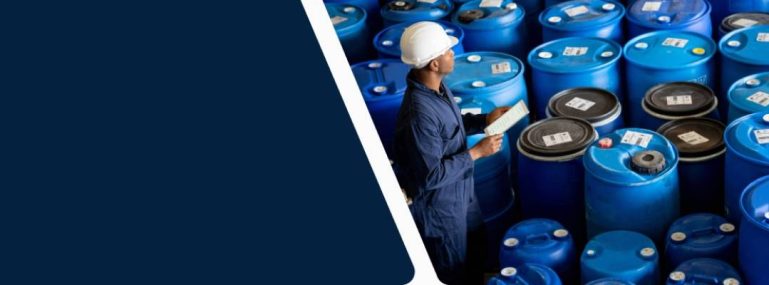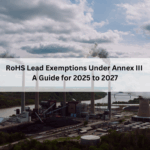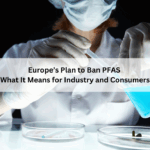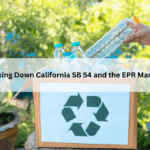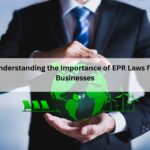Posted Under: REACH Compliance Services
About REACH Compliance
Registration, Evaluation, Authorization and Restriction of Chemicals (REACH) is the system for controlling chemicals in the EU/EEA. REACH entered into force in 1 June 2007.
REACH addresses most of the chemical substances that are manufactured in, or imported into, the EU. This can be
- A substance on its own
- A substance in a mixture
- A substance that makes up an ‘Article’
REACH is the strictest law to date regulating chemical substances and will affect industries throughout the world. REACH entered into force in 1 June 2007, with a phased implementation over the next decade.
How REACH Compliance helps Companies?
Information on the properties and hazards of substances are needneeded to be collected and assessed as per this regulation. REACH establishes procedures for it. Companies need to register their substances and to do this they need to work together with other companies who are registering the same substance. The substances manufactured or imported into the EU in quantities of 1 tonne per year or more need to be registered.
In principle, REACH applies to all chemical substances; those used in industrial processes, day-to-day lives, cleaning products, paints , articles such as clothes, and furniture etc. Therefore, the regulation has an impact on most companies across the EU.
What is important
Before starting the procedures for becoming REACH compliant, it is important to identify who you are and what is your role under REACH. And you need to understand the ways it might affect you. First you have to ask yourself what you do in your business and where chemicals might be used.
REACH impacts on a wide range of companies across many sectors, even those who may not think of themselves as being involved with chemicals.
Almost every company in the European Union will be bounded by a new responsibility under REACH. There are different types of REACH duty holder, which are explained below to see how you fit in.
Duty holders
-
- If you make chemicals, either to use yourself or to supply to other people (even if it is for export), You are called Manufacturer under REACH and you will probably have some important responsibilities under REACH.
- If you buy anything from outside the EU/EEA, It may be individual chemicals, mixtures for onwards sale or finished products, like clothes, furniture or plastic goods;you are called Importer and you likely to have some responsibilities under REACH.
- Most companies use chemicals, sometimes even without realizing it, any business using chemicals can be categorized under Downstream users, which probably includes most businesses in some way .Therefore you need to check your obligations if you handle any chemicals in your industrial or professional activity. You might have some responsibilities under REACH. Other actors in the supply chain such as distributors also can be a part of this category.
If you are a company established outside the EU, your category is Companies established outside the EU, and you are not bound by the obligations of REACH, even if you export their products into the customs territory of the European Union. The responsibility for fulfilling the requirements of REACH, such as preregistration or registration lies with the importers established in the European Union, or with the Only Representative of a non-EU manufacturer established in the European Union.
Obligations
Manufacturer
Manufacturer: A manufacturer is somebody based in the EU/EEA that produces or extracts a substance. This could be by chemical synthesis, by smelting or by extracting them from another sources. Companies that simply blend substances together not generally manufacturers; however,they should check this, especially when mixing acids and bases.
Duty:
-
-
- If you want to continue to manufacture chemicals covered by REACH you will need to register them with the European Chemicals Agency (ECHA) in Helsinki. Registration means providing a package of technical information on the chemical and its hazards. Registration is phased over a period of years based on tonnage levels and in some cases the hazards of the chemical.
- EU manufactures shall ask for or prepare the latest Safety Data Sheets according to REACH and CLP regulation if the substances or preparations meet the criteria for classification as hazardous.
- They shall communicate information about the safe use of chemicals (risk management measures) along the supply chain in the format of SDS/exposure scenario
-
Importer
Importer: If you directly import anything from outside the EU/EEA, be it chemical substances (including metals), mixtures, articles, or articles that substances intended for release, then its quite possible that you may have some responsibilities under REACH.
Duty:
-
-
- If you want to continue to import chemicals covered by REACH you will need to register them with the European Chemicals Agency (ECHA) in Helsinki.
- Companies outside the EU cannot register chemicals themselves but can appoint an EU-based agent called ‘Only Representative’ to act on behalf of their EU-based importer.
- EU importers will be exempt from REACH registration if their non-EU suppliers have registered by appointing REACH Only Representative(OR); however, importers need to confirm with their suppliers’ OR that they are on the inventory of importers and their tonnage and uses are covered by the registrations of OR. This can be done by asking for REACH Certificate of Compliance from the only representative.
- Rest of your obligations are very same as that of manufacturers which described already.
-
Downstream user
Downstream user: They are companies or individuals who use a chemical substance,either on its own or in a mixture, in the course of their industrial or professional activities. Downstream users have a key role to play in advancing the safe use of chemicals by implementing safe use at their own site and communicating relevant information both to their suppliers and their customers.
They can be Distributors. Distributors are anyone who only stores and places on the market a substance (on its own or in a mixture) for third parties. Placing on the market may be supply or simply making a substance available, and may be in return for payment or free of charge. A retailer is a distributor. If the products that you distribute are articles, then you will also be classed as a supplier of articles. Communication up and down the supply chain is one of the things critical to the success of REACH. As a distributor, you are a vital link in this communication chainand your participation is needed.
Downstream users can be found in many industries and occupations. Examples include:
Distributors, Formulators, End users, Producers of articles, Re-fillers, Re-importers etc.
Duty: The main roles and obligations of downstream users are
-
-
- Inform supplier of a use when the substance is not yet registered
- Identify and apply appropriate measures in the safety data sheet
- Implement the measures communicated in the exposure scenario or take alternative actions
- Preparing a downstream user chemical safety report
- Downstream user report to ECHA
- Communicate information to suppliers
- Communicate information regarding safe use to own customers
- Comply with any Authorization requirements
- Comply with any Restriction requirements
- omply with requirements regarding substances in articles
-
Companies established outside the EU
-
-
- As mentioned before you are not bound by the obligations of REACH, even if you export their products into the customs territory of the European Union. The responsibility for fulfilling the requirements of REACH, such as preregistration or registration lies with the importers established in the European Union, or with the Only Representative of a non-EU manufacturer established in the European Union.
- Importers in the EU may turn to their non-EU suppliers and request information that they need to fulfill their regulatory obligations. As a non-EU manufacturer, you can support your customers further, i.e. importers established in the European Union, by appointing an only representative to fulfill the obligations of importers under the REACH Regulation.
- So even though you as a non-EU company are not affected directly, your supply chains will expect your support.
-
So in practice then, everyone in the EU that manufactures a product, trades or uses a chemical is likely to be affected to some degree. Since the regulation has an impact on most of the companies across the EU, REACH is likely to be one of the biggest programs of work for them.
REACH comes at a considerable cost, the most accepted overall price tag is €6 billion but REACH is see as industry’s responsibility and industry, therefore, has to foot the bill.
How Enventure services help you on Reach Compliance:
Enventure with a decade of experience in product environmental compliance can offer complete solution for your REACH compliance needs. We can offer REACH gap analysis, REACH compliance road map, Identify full chemical composition of your articles, Identify SVHCs in your products and support you in registration and other obligations in compliance. Speak to one of our consultant to know more about your obligation and how you can fulfill in a shorter time frame.
